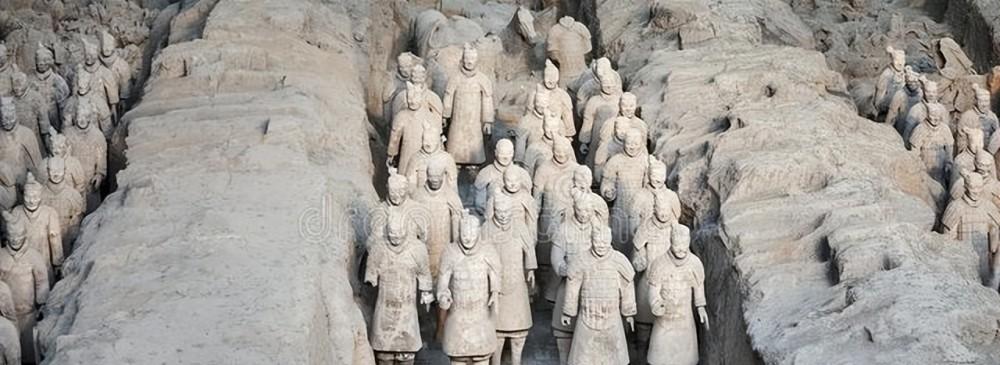
When it comes to the Terracotta Warriors, the first thing that comes to mind is the Mausoleum of the First Emperor of Qin, but in 1984, a peasant name under the Lion Mountain in Xuzhou City, Jiangsu Province, inadvertently dug a large-scale terracotta pit when digging a cellar. After receiving the report, the local cultural relics department immediately organized personnel to carry out rescue excavations in this area, and more than 4,000 small potters of different shapes were excavated in this terracotta pit, and a car and horse pit was also found nearby, which was judged to have a more distinct Han Dynasty style according to the excavated cultural relics. This makes archaeologists very excited, because everyone knows that thick burials were popular in the Han Dynasty, as long as it is the tomb of the princes of the Han Dynasty, there will always be many rare treasures unearthed. The dead princes were eager to bring all the wealth of the world to the earth, and it was no wonder that Cao Cao had to dig graves everywhere to expand military supplies.
Returning to the Lion Mountain Han Tomb we are going to talk about today, the archaeologists found after careful observation that these terracotta warriors were facing west, and the owner's tomb must be in the east of the figurine pit. This east happens to be the Lion Mountain, which is also in line with the Han Dynasty", "according to the mountain as a mausoleum, chiseled for burial" tomb construction customs, the mausoleum is directly excavated in the mountain, then directly on the Lion Mountain can be found. But to the surprise of the archaeologists, this search was searched for ten years, and later geological experts were invited and did not find it. Although Lion Rock is not large, it is a stone mountain, and it is difficult to hit the mountain below one meter with the usual tomb exploration tools, which means that if you can't find the sealing place at the entrance of the tomb, it is impossible to open the mausoleum smoothly.
After several years of surveys, archaeologists and geologists have not been able to determine the exact location of the tomb, and when chatting with the villagers on the mountain, a villager said that the sweet potato cellar dug by their family was more than 2 meters deep, which attracted the attention of the experts present. Through the survey of the villagers' sweet potato cellar, it was found that this was the entrance to the tomb of the Han Tomb of Lion Mountain. However, in the process of archaeological excavation, everyone found that this mausoleum has long been patronized by tomb robbers (it seems that the skills of tomb robbers are greater than experts), which has to make people feel uneasy.
Disappointment and surprise always appear at unexpected moments, under the unremitting efforts of archaeologists, the large-scale mausoleum was all excavated, the mausoleum almost hollowed out the small Lion Rock, in addition to the main burial chamber There are 12 large and small burial chambers with various facilities and structures, although the main burial chamber was stolen, other burial chambers are well preserved. Although the golden jade clothes have been scattered into gold wire and jade pieces, the mountains of copper coins, various jade and bronze objects fill the various burial chambers, reproducing the luxurious life scenes of the Western Chu And Han kings, and also confirming the funerary concept of "seeing death as life" prevalent in the Han Dynasty. Among them, there is a bronze Mu Jian, which is a utensil used by the ancients to bathe, but it is an orphan product found so far.
In the later archaeological process, it was found that the large-scale tomb of the building showed some signs of hastily finished work, and due to the theft of the main burial chamber, the golden seal representing the identity of the owner of the tomb could not be found, but definite evidence was found from other clues. The owner of this tomb was Liu Peng, the third king of Chu, who was hastily buried by his family due to the defeat and suicide of the soldiers who participated in the rebellion of the Seven Kings at that time. Although the mausoleum has been built for nineteen years, when Liu Peng was buried, it had not yet been repaired, an unfinished mausoleum, a hasty funeral, and the Tomb of the King of Chu thus left many mysteries to people after a thousand years.